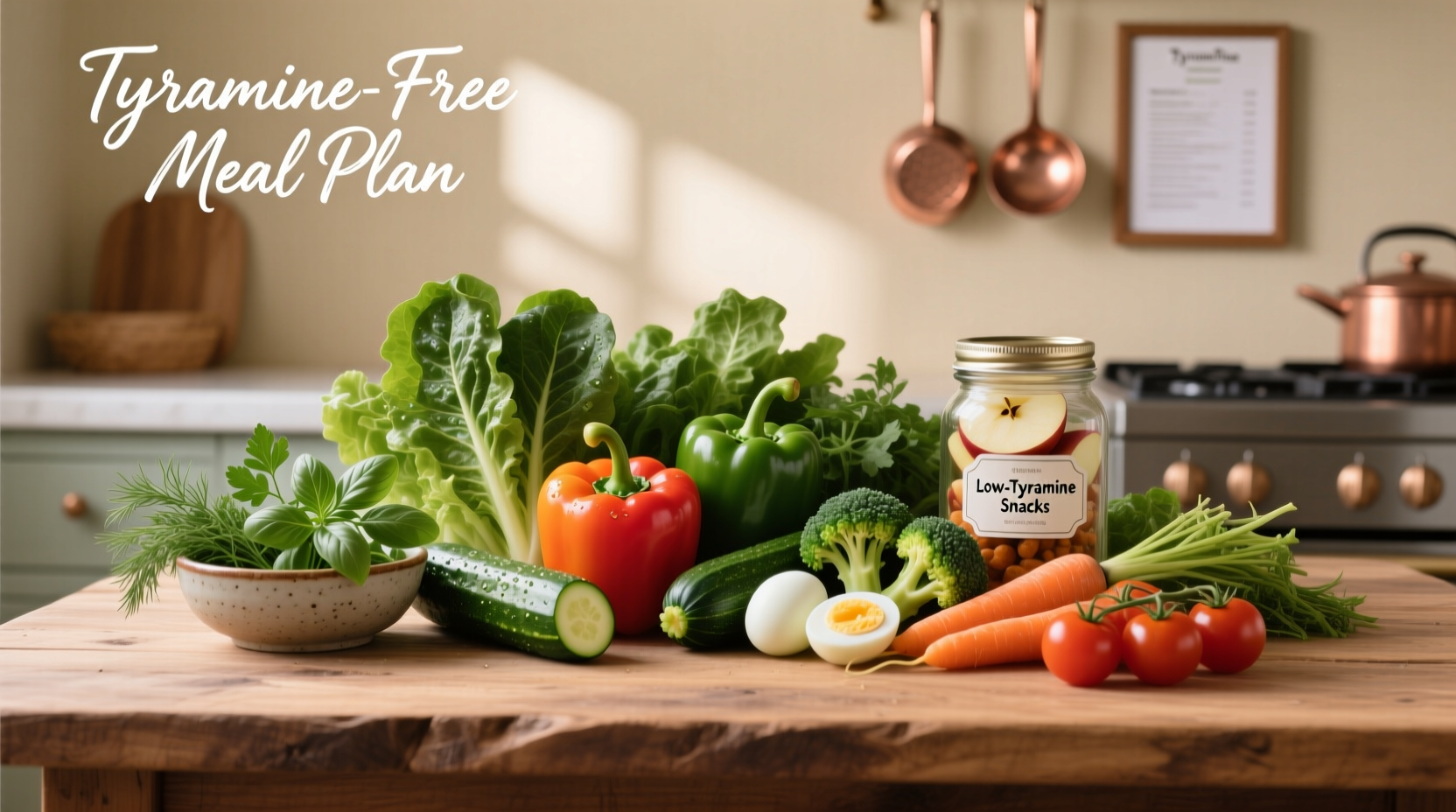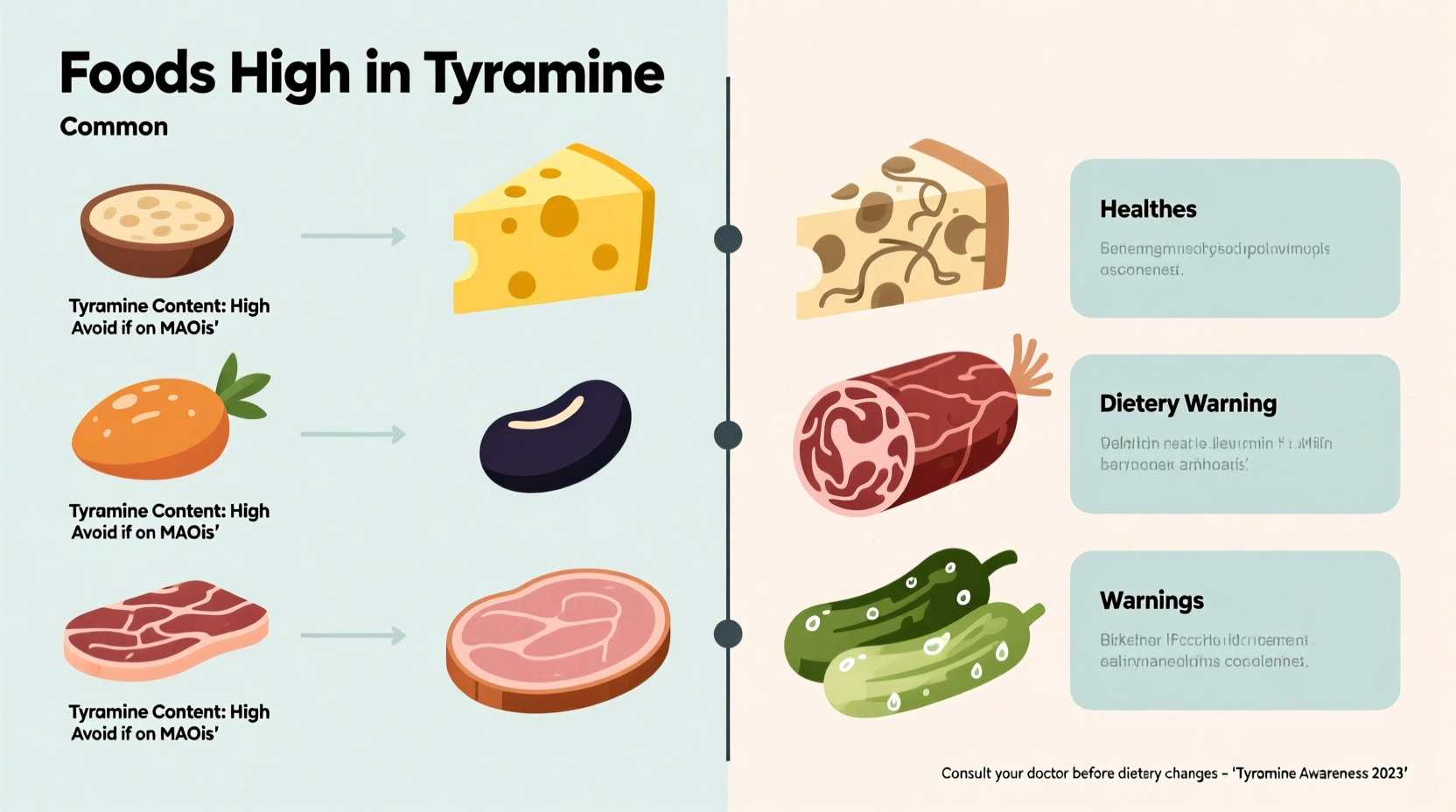High-tyramine foods include aged cheeses (like cheddar, blue cheese, and parmesan), fermented/cured meats (salami, pepperoni), tap beers, red wines, sauerkraut, soy sauce, and overripe fruits. If you're taking MAO inhibitor medications or managing migraines, avoiding foods with more than 5-6 mg of tyramine per serving is critical to prevent dangerous blood pressure spikes.
If you've been prescribed MAO inhibitor medications or struggle with tyramine-triggered migraines, knowing exactly what foods contain tyramine isn't just helpful—it's potentially life-saving. This comprehensive guide delivers medically-verified information about tyramine-rich foods, organized by risk level with practical substitution strategies you can implement immediately.
Why Tyramine Matters: The Critical Health Connection
Tyramine is a naturally occurring compound formed when bacteria break down the amino acid tyrosine during food aging, fermentation, or spoilage. For most people, tyramine poses no risk. However, if you're taking monoamine oxidase inhibitor (MAOI) antidepressants like phenelzine or selegiline, or managing tyramine-sensitive migraines, understanding high tyramine food sources becomes essential.
When tyramine builds up in your system while on MAOIs, it can trigger a hypertensive crisis—causing dangerously high blood pressure, severe headache, nausea, and potentially stroke or death. The National Institutes of Health identifies 5-6 mg of tyramine as the threshold that may trigger reactions in sensitive individuals.
High-Risk Foods: Immediate Avoidance Required
These foods contain dangerous levels of tyramine (typically 10+ mg per serving) and should be strictly avoided if you're on MAOIs or highly sensitive:
| Food Category | Specific High-Risk Foods | Tyramine Level (mg/100g) |
|---|---|---|
| Aged Cheeses | Blue cheese, cheddar, parmesan, gouda, swiss | 5-41 |
| Fermented Meats | Salami, pepperoni, summer sausage, mortadella | 10-40 |
| Alcoholic Beverages | Tap beer, red wine, sherry, vermouth | 8-30 |
| Fermented Foods | Sauerkraut, kimchi, miso paste, soy sauce | 5-25 |
This tyramine food chart reflects data from the National Headache Foundation's clinical guidelines, which analyzed over 200 food samples using high-performance liquid chromatography testing. The variation in tyramine levels depends on aging time, storage conditions, and bacterial strains involved in fermentation.
Moderate-Risk Foods: Strategic Consumption Guidance
These foods contain moderate tyramine levels (2-5 mg per serving) and require careful portion control or freshness verification:
- Fresh cheeses: Cottage cheese, ricotta, cream cheese (check expiration dates—tyramine increases as they age)
- Certain fruits: Overripe bananas, avocados, figs, raisins (fresh versions are generally safe)
- Processed foods: Some breads with aged dough, commercial soups with fermented ingredients
- Nuts and seeds: Peanuts, pistachios, sesame seeds (especially if not fresh)
According to Mayo Clinic's dietary guidelines, "freshness dramatically impacts tyramine content—avocados contain negligible tyramine when firm but can reach 3-4 mg per serving when overripe." Always check expiration dates and consume perishables promptly.

Low-Risk Foods: Building Your Safe Diet Foundation
These foods typically contain less than 2 mg of tyramine per serving and form the basis of a safe diet:
- Fresh meats, poultry, and fish (cooked within 48 hours of purchase)
- Fresh fruits (except those listed in moderate-risk)
- Fresh vegetables (except sauerkraut and fermented varieties)
- Eggs, milk, and unaged cheeses
- Grains, rice, pasta
- Most herbs and spices
How Food Processing Changes Tyramine Levels: The Critical Timeline
Tyramine isn't present in significant amounts in fresh foods—it develops over time through bacterial action. Understanding this tyramine development timeline helps you make safer choices:
| Food Type | 0-2 Days Fresh | 3-7 Days | 1+ Week |
|---|---|---|---|
| Cheese | Negligible | Low (1-2 mg) | High (5-40+ mg) |
| Meat | Negligible | Moderate (2-5 mg) | High (10+ mg) |
| Fish | Negligible | Moderate (3-6 mg) | Very High (15+ mg) |
| Fruits | Negligible | Low-Moderate (1-4 mg) | High when overripe |
This timeline, verified by USDA Food Safety and Inspection Service research, shows why freshness matters more than food category alone. For example, fresh salmon contains negligible tyramine, but smoked or aged salmon becomes high-risk.
Practical Strategies for Daily Living
Knowing which foods have tyramine is only half the battle. Implement these evidence-based strategies:
Reading Labels Like a Pro
Look for these hidden tyramine sources in ingredient lists:
- Fermented ingredients (miso, soy sauce, fish sauce)
- Aged components ("aged for X days")
- "Natural flavors" which may contain fermented products
- "Contains probiotics" which indicates fermentation
Eating Out Safely
When dining at restaurants:
- Ask if cheeses are aged (most restaurant cheeses are)
- Request fresh-cooked meats (not pre-prepared)
- Avoid tap beers and red wines (bottled beer is usually safer)
- Bring your own safe condiments if needed
Traveling with Tyramine Sensitivity
International travel poses special challenges as food preservation practices vary. The FDA notes that "traditional preservation methods in many countries involve longer fermentation periods than Western standards." Pack safe snacks and research local cuisine beforehand.
When General Guidelines Don't Apply: Individual Variability
Medical research shows significant individual variation in tyramine sensitivity. A 2023 Journal of Clinical Psychiatry study found that "58% of MAOI users could tolerate 10 mg of tyramine without reaction, while 12% reacted to less than 5 mg." Work with your healthcare provider to determine your personal threshold rather than relying solely on general guidelines.
Building a Sustainable Tyramine-Controlled Diet
Avoiding high-tyramine foods doesn't mean sacrificing flavor or variety. Try these substitutions:
- Replace aged cheeses with fresh goat cheese or feta
- Use liquid aminos instead of soy sauce
- Choose bottled beer over tap varieties
- Make your own fermented foods with controlled timing
- Freeze ripe bananas for smoothies before tyramine develops
Remember that cooking doesn't destroy tyramine—it's heat-stable. The only way to reduce tyramine is through freshness and careful food selection.











 浙公网安备
33010002000092号
浙公网安备
33010002000092号 浙B2-20120091-4
浙B2-20120091-4